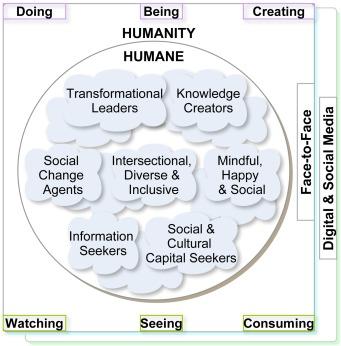10 Proven Strategies for Effective Remote Teaching: Boost Engagement and learning Results
The shift to remote teaching has revolutionized education, offering flexibility and accessibility like never before. However, keeping students engaged and ensuring effective learning outcomes in an online environment presents unique challenges. Whether you’re a seasoned online educator or just starting,mastering the art of effective remote teaching is essential. In this extensive guide, we’ll explore 10 proven strategies for effective remote teaching, packed with actionable techniques to help you boost engagement and learning results in your virtual classroom.
Benefits of Effective Remote Teaching
- Flexibility: Students can learn at their own pace and schedule, increasing motivation and participation.
- Accessibility: Teaching remotely removes geographical barriers, enabling access to a wider pool of learners.
- Resource Diversity: Digital platforms facilitate the integration of multimedia and interactive resources.
- Personalized Learning: technology enables personalized feedback and adaptive learning paths.
By implementing proven remote teaching strategies, educators can harness these benefits to foster deeper engagement and drive better academic results.
10 Proven strategies for Effective Remote Teaching
-
Create a Structured learning Environment
Consistency and structure are vital in remote teaching. Use a clear schedule and predictable routine to create stability for students. Share weekly agendas, assignment deadlines, and meeting times on your learning management system (LMS) to set expectations and minimize confusion.
-
Leverage Multimedia Tools for Engagement
Incorporate videos, podcasts, interactive quizzes, and visual aids to cater to diverse learning styles. Tools like Khan academy, Quizlet, and Canva make online lessons visually stimulating and interactive, keeping students invested in the material.
-
Encourage Real-Time Interaction and Collaboration
foster a sense of community by using breakout rooms, discussion boards, and group projects. Platforms like Zoom, Google Meet, or Microsoft Teams support small group interactions and collaborative learning.
- Host regular Q&A sessions.
- Assign group tasks using shared documents.
- Set up peer review cycles for projects.
-
Provide Clear Instructions and Regular Feedback
Clear, concise instructions prevent misunderstandings in remote teaching. Utilize video walkthroughs or screencasts to explain tasks. Offer prompt, constructive feedback through annotated comments or personalized video messages to keep learners on track.
-
Utilize Formative Assessments Frequently
Frequent,low-stakes assessments like online quizzes,polls,and reflection journals help gauge student understanding and adjust instruction accordingly. Platforms such as Kahoot! or Google Forms are effective for fast check-ins.
-
Foster Student Autonomy and Choice
Empower students by offering choices in assignments or topics. Flexible options promote ownership and motivation, making learning more relevant. for example, allow students to select their presentation format (e.g., video, slideshow, written report).
-
Build Social Presence and Emotional Connection
Effective remote teaching is not just about content delivery—itS also about building relationships. Start sessions with check-ins, use humor, and share personal anecdotes to humanize online interactions. A strong social presence enhances trust and engagement.
-
Make Use of Analytics to Inform Teaching
Most LMS platforms provide data on student participation, quiz results, and content interaction. Analyse this data regularly to identify learners needing support and to modify tough course sections.
- Track attendance trends.
- Monitor assignment completion rates.
- Identify content that leads to high student engagement.
-
Encourage Reflective Practice and Self-Assessment
Invite students to reflect on their learning, set goals, and self-assess through journals, discussion posts, or digital portfolios. Reflection fosters metacognitive skills and helps learners identify their strengths and areas for growth.
-
Offer Accessible and Inclusive Materials
Ensure all students can access your content regardless of abilities. Provide captions for videos,use screen-reader-kind documents,and avoid color combinations that are hard to distinguish. Inclusive design supports varied learners and removes participation barriers.
Practical Tips for Triumphant Remote Teaching
- Set up a dedicated, distraction-free workspace for teaching to maintain professionalism and minimize interruptions.
- Communicate proactively with students regarding schedules, expectations, and available support channels.
- Invest in reliable technology—ensure stable internet, quality headphones, and an external microphone if possible, for clearer communication.
- Stay adaptable: Technical issues and unexpected challenges are certain. Maintain flexibility and have backup plans for live sessions.
- Foster a positive online community by establishing netiquette guidelines and celebrating successes—even small ones!
case Study: Real-life Success in Remote Teaching
Ms. Roberts, a 7th-grade math teacher, transitioned to remote learning using these proven strategies. By integrating weekly interactive quizzes, providing video feedback, and offering choice in assignments, her students’ engagement increased markedly.she also used regular breakout sessions for peer instruction, allowing quieter students to voice their thoughts. Consequently, class participation and test scores rose by over 15% compared to traditional in-person teaching.
first-Hand Experience: Lessons Learned from Remote teaching
Having taught virtually over multiple semesters, I found that the biggest breakthroughs come from consistent communication and empathy. Regular check-ins and simple acknowledgment messages (“Grate job, Alex!” or “let me know if you need help”) often made a huge difference in student morale. Remember, effective remote teaching goes beyond content—it’s about cultivating an atmosphere where students feel seen, supported, and inspired to learn.
Conclusion: Elevate Your Remote Teaching Game
Adapting to remote teaching can seem daunting,but with the right strategies and mindset,it can be incredibly rewarding. By incorporating these ten proven strategies for effective remote teaching, you can create dynamic, inclusive, and high-performing virtual classrooms. Focus on fostering engagement, building strong relationships, and leveraging technology to maximize your students’ learning outcomes. The future of education is digital—embrace these strategies today to led and inspire tomorrow’s learners.

